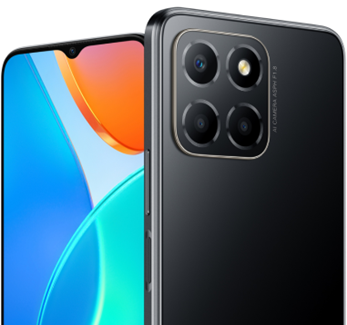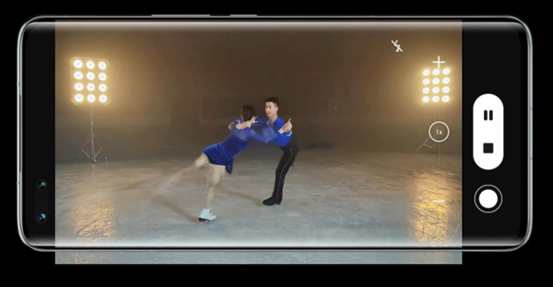Can a Smartwatch Improve Your Running Form?
Running form has a direct impact on performance, efficiency, and injury risk. Many runners unintentionally establish bad habits that restrict their pace or cause pain over time. Smartwatches increasin...
25/11/2025
Running form has a direct impact on performance, efficiency, and injury risk. Many runners unintentionally establish bad habits that restrict their pace or cause pain over time. Smartwatches increasingly have capabilities that track running mechanics, allowing users to recognize and remedy inefficiencies. With the correct data and assistance, runners may improve their posture, stride, and cadence—all from the wrist. This tutorial investigates how smartwatches track running form, whether the data may lead to meaningful improvements, and which characteristics are most beneficial for fine-tuning the technique. Smartwatch insights may make every run smarter and more successful, whether you're a novice learning how to run or an established athlete looking to improve.

How Do Smartwatches Track and Analyze Running Form?
Key Running Metrics Smartwatches Measure
Smartwatches collect key running metrics that indicate form trends. Cadence, or steps per minute, assists in detecting overstriding or poor rotation. Ground contact time indicates how long each foot is on the ground, which affects speed and tiredness. Vertical oscillation evaluates how much your body bounces with each stride, which is a good sign of lost energy. The essential data elements are stride length, left-right foot balance, and pace consistency. Many watches monitor heart rate in addition to other parameters to demonstrate how effectively the body moves under stress. Together, these numbers provide a comprehensive picture of how your body moves, allowing runners to measure improvement and identify possible form faults before they become problems.
Sensors Behind Form-Tracking Features
Smartwatches detect movement, impact, and elevation using built-in sensors such as accelerometers, gyroscopes, and barometric altimeters. These sensors track motion in various directions, recording the rhythm and force of each stride. Some models include chest straps or foot pods to capture more specific biomechanical data, such as ground contact time and stride symmetry. Optical heart rate sensors integrate physiological data with movement monitoring, providing a more complete view of running efficiency. High-end devices integrate GPS and inertial motion tracking to capture real-time pace and movement patterns. These integrated sensor systems enable smartwatches to go beyond simple step counting and deliver more detailed insights into the subtle mechanics of running form under various situations.

How Smartwatch Data Helps Runners Understand Their Gait
Gait analysis used to need laboratory testing, but smartwatches now deliver this information to your wrist. Watches gather stride parameters, including cadence, balance, and oscillation, which reveal patterns that impact performance and injury risk. For example, a low cadence or a strong vertical oscillation may indicate an energy-wasting type. Imbalanced ground contact time may indicate muscular weakness or bad posture. Smartwatches visualize this data, making it easy to compare sessions and measure progress. Over time, runners develop an understanding of how their gait varies in response to tiredness, speed adjustments, and terrain variations. This awareness promotes form literacy, allowing runners to self-correct, make intelligent modifications, and progress toward smoother, more efficient movement with each run.
Can Smartwatch Metrics Actually Improve Your Running Form?
Benefits of Real-Time Feedback and Coaching
Real-time input from a smartwatch provides runners with a quick understanding of their form. Alerts for cadence decreases, overstriding, or pace adjustments allow you to address problems as they occur, rather than after the run. Some smartwatches provide audible or tactile indications for posture or stride recommendations during a run, helping runners stay focused without disrupting their rhythm. Paired applications frequently offer virtual instructors or adaptive training that adapts based on performance. This fast feedback loop improves habits by repeatedly reinforcing proper form. Unlike guesswork or delayed video analysis, real-time measurements establish a direct link between movement and correction. Over time, this results in more consistent running mechanics, lower injury risk, and notable performance benefits, particularly during longer or more strenuous runs.
How Data Helps Runners Fix Common Form Issues
Smartwatch data identifies little issues that create significant setbacks. Overstriding, poor cadence, and footstrike imbalance are common difficulties among runners, and they wear down the body over time. Runners can identify issues early by evaluating measures such as ground contact symmetry and stride length trends. Most watches save form data for each session and track changes over weeks or months. For those learning how to start running, this insight is especially helpful in building good habits from the beginning. Runners may utilize this input to improve exercises, warm-ups, and strengthen weak muscle regions. Knowing when and why form falls down—on slopes, at high speeds, or amid fatigue—allows for more informed training decisions. Rather than guessing what to address, the data points to specific form behaviors, making progress more targeted, efficient, and trackable.
Which Smartwatch Features Matter Most for Better Running Form?
Advanced Running Dynamics to Look For
Seek out timepieces with sophisticated running dynamics to enhance your running form. Cadence, stride length, vertical oscillation, ground contact duration, and symmetry metrics are a few of these. For hill running analysis, a barometric altimeter offers accurate elevation gain tracking. Even more accurate information on power production and balance is gathered by watches that allow coupling with chest straps or foot pods. In order to help runners comprehend energy efficiency, some models also compute running power in watts. During runs, you may prioritize form-specific metrics with customizable data panels. It is simpler to identify flaws and monitor progress in more intricate dynamics. Selecting a wristwatch with extensive running form features facilitates the conversion of raw data into tangible, long-lasting performance gains.
Training Modes and Coaching Tools That Help You Improve
Form-focused training modes and coaching capabilities on smartwatches can help runners make systematic progress. Seek out watches that react to your real-time stats with adaptive training regimens, form exercises, or cadence workouts. While downloaded training programs focus on objectives like efficiency or injury avoidance, virtual coaches provide cues based on stride adjustments. Certain applications look at your form patterns and provide strength training or recuperation techniques by highlighting how form changes with exertion, interval and tempo modes assist runners in maintaining consistency at all speeds. By transforming data into action, intelligent coaching tools streamline the procedure. For runners who wish to get better without going to a lab or employing a personal coach, these characteristics are very useful.
Conclusion
A wristwatch can be an effective tool for improving running form, providing data and feedback formerly reserved for elite runners and lab testing. Modern timepieces track your movements, from cadence and stride to balance and ground contact time. When runners use this knowledge on a regular basis, they may decrease injuries, increase efficiency, and run with more confidence. Real-time notifications, virtual coaching, and training modes all assist in converting insights into healthier behaviors. The goal is to select the correct watch with features designed to enhance form and commit to regular use. Whether you're just getting started with jogging or honing your expert technique, a wristwatch gives the feedback and structure you need to move intelligently at all times.




